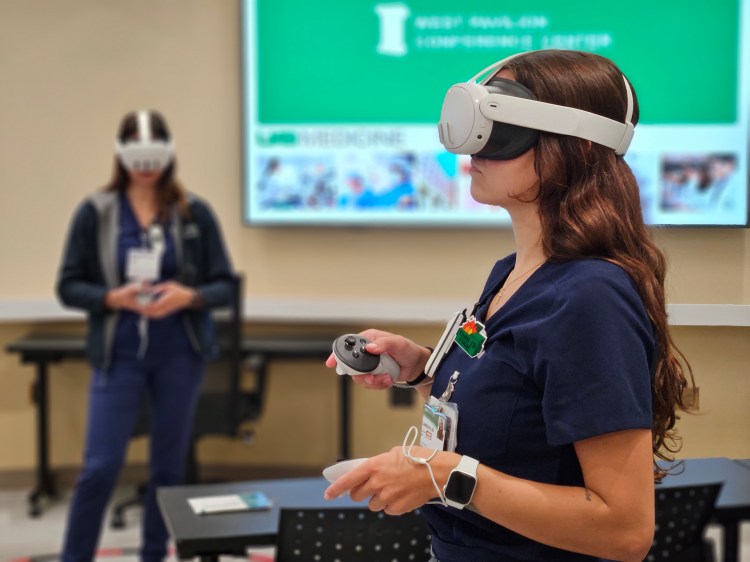Clin Sim VR sessions focus on NIH Stroke Scale

The National Institutes of Health (NIH) Stroke Scale helps health-care providers measure the severity of a patient’s stroke—and UAB Clinical Simulation is offering these providers virtual learning to produce real results.
Virtual reality accomplishes several goals in preparing learners for clinical practice. First and foremost, it provides an opportunity for learners to apply their knowledge by being able to perform the assessment on a virtual patient in a controlled environment, explained Andres Viles, Clinical Simulation’s director of immersive simulation.
The medium also offers flexibility.
“This being a one-hour session, learners have the ability to try again,” Viles said. “This helps develop a higher level of proficiency and confidence in a short amount of time.”
Clinical Simulation has offered this experience since February, per request of senior leadership in UAB Neuroscience Nursing.
“The hope was to use this as an alternative to the three-hour online didactic for NIH Stroke Assessment Certification,” Viles said, adding that it is now being utilized by UAB’s neurology residency program.
The results have been overwhelmingly positive.
“We thought this would be a lot more hands-on and that participants would really get a lot more out of this,” said Amanda Morrison, R.N., stroke program coordinator with UAB’s Department of Neurology. “I think it offers them a much better understanding of the stroke scale, and it’s also kind of fun to interact with a virtual patient.”
Karen Webb, R.N., of UAB’s Neurosciences Intensive Care Unit, agrees.
“It was just like being with my patient in the room,” she said. “I’ve been doing stroke for four years, and I felt this was much more effective and enjoyable.”
Graduate medical education resident Hannah Vickland, M.D., also participated in the simulation, which was her first time experiencing virtual reality.
“I thought it was awesome,” she said. “I enjoyed being able to practice with a simulated patient versus a real patient. It’s really cool to see how technology can enhance our learning.”
For more information on Clinical Simulation’s virtual reality offerings, visit here. To learn more about how your team or department can benefit from simulation, email UAB Clinical Simulation at simulation@uabmc.edu.
UAB Medicine’s Clinical Simulation program offers opportunities for individuals and teams across UAB Medicine and beyond to practice before they deliver care. We encourage all who provide and support patient care to “SimFirst.” Together, we can put our patients’ safety first.




0 Comments